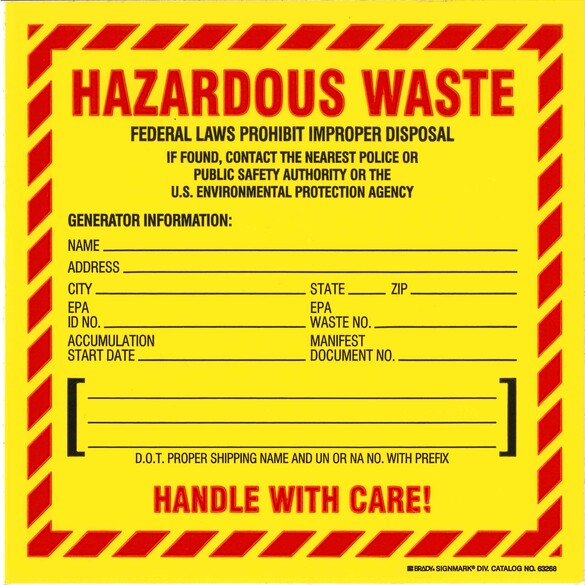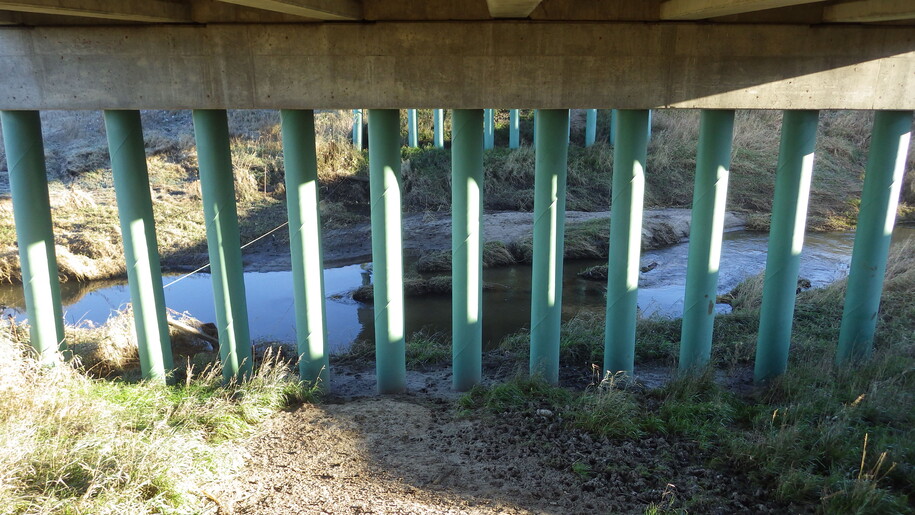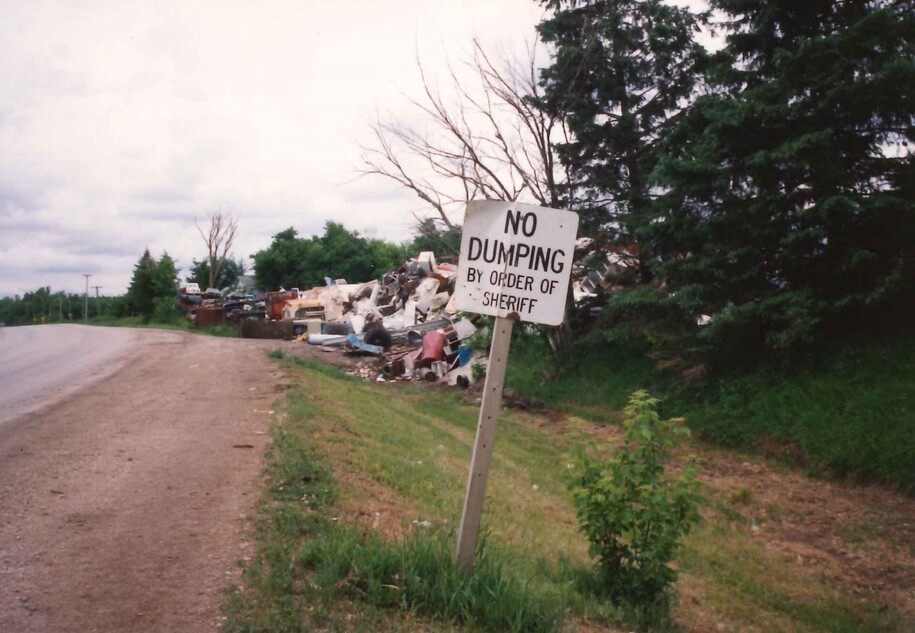Iowa DOT staff assigned to regulated materials section work with a variety of issues related to known or potentially contaminated sites, investigations for and the handling of hazardous materials.
Regulated Materials Issues
List items for Regulated Materials Issues

The Iowa DOT does generate hazardous waste as part of its routine operations. While much progress has been made in reducing the amount of hazardous waste generated, it is unlikely the Iowa DOT will eliminate all such waste in the foreseeable future. The majority of the Iowa DOT’s hazardous waste consists of spent aerosol cans, solvents, paints, oils, and fuel. These wastes are collected and stored at a dedicated waste management building. Staff from the regulated materials section conducts on-site management and arranges disposal of these wastes in accordance with state and federal regulations.

Asbestos
The EPA regulates asbestos under the National Emission Standards for Hazardous Air Pollutants. The Iowa Department of Natural Resources has been delegated the authority to implement and enforce the demolition and renovation portions of the asbestos NESHAP as contained in Title 40 of the Code of Federal Regulations (40 CFR), Part 61. Before any demolition or renovation of a regulated structure these regulations require
- a thorough inspection for the presence of asbestos-containing materials,
- filing proper notifications, and
- safe removal and proper disposal of the ACM.
Certified Iowa DOT inspectors check all buildings acquired for highway projects prior to their demolition. Facilities owned and operated by the Iowa DOT are inspected prior to all demolitions and prior to proposed renovation projects that have the potential to encounter ACM. Additionally, the Iowa DOT inspects interstate and primary road bridges when projects involve the major repair or replacement of a bridge or its structural components. Staff from the regulated materials section oversees asbestos abatement as needed through the use of statewide service contracts.
Lead Paint
Prior to performing painting projects on bridges and for projects which involve the removal of painted components including complete bridge replacements, paint scrape samples are collected and analyzed for lead and chromium content. Paint systems previously applied to bridges in Iowa have the potential to contain hazardous levels of these two metals.
Whenever possible staff from the regulated materials section collects paint scrape samples in conjunction with bridge asbestos inspections. Samples are collected from all metal bridge components including but not limited to girders, beams, bearings, pier casings, handrails, and expansion plates. Because different structural components on a bridge have been found to be coated with different paint systems, samples from each type of structural component is necessary.
Project plan notes are updated with the findings of the sampling so contractors are aware of the results. The DOT’s standard specifications require the proper handling and disposal of paint and painted components removed as part of bridge projects.

The Iowa Department of Natural Resources (DNR) regulates sites contaminated by petroleum releases from underground storage tanks. These are known as leaking underground storage tank sites. The regulated materials Section has oversight for the investigation, remediation and monitoring of contaminated DOT sites utilizing a statewide environmental service contract. The Iowa DOT’s leaking tank sites have consisted of current and former DOT maintenance garage properties and parcels acquired as part of highway construction projects.
Upon review of site conditions outlined in investigation and monitoring reports, the DNR assigns risk classifications specific to each site. These classifications can be "High", "Low" and "No Action Required". High-risk sites typically require some form of corrective action, Low-risk sites typically require monitoring (semi-annual or annual sampling and reporting), and No Action Required sites have met the DNR’s site closure requirements.
The Iowa DOT has worked through the regulatory requirements to obtain closure for its leaking underground storage tank sites.

From our perspective, a "regulated materials" site is a property where the soil and/or groundwater is known to be, or has the potential to be, impacted by the intentional or unintentional release of materials or substances which are regulated by the United States Environmental Protection Agency and/or the Iowa Department of Natural Resources. This includes petroleum products, solvents, heavy metals, coal tar constituents, polychlorinated biphenyls , pesticides, etc. Sources of contamination can include leaking tanks or drums, accidental chemical spills, improper waste storage and disposal, general poor housekeeping practices, etc.
Staff from the regulated materials section reviews sites with known or potential contamination issues. Sites may be identified through private database-search companies and/or the review of various state and federal databases including those of the Iowa DNR and EPA, current and historic aerial photographs, Sanborn fire insurance maps, city directories, title searches, county assessor websites, windshield surveys, geographic imagery, and agency and selected property owner interviews.
Regulated materials sites are not typically a key factor in selecting a highway project’s alignment alternative, although some exceptions do exist, e.g., the discovery of former manufactured gas plants/coal tar sites or EPA “Superfund” sites can play a major role in the decision-making process.
The early identification and documentation of regulated materials sites can help the Iowa DOT more fully understand the potential environmental liabilities and constraints associated with contaminated sites and make more informed decisions regarding alignment alternatives. When these sites can be identified and considered early in the process, alternatives that reduce the need to clean up contaminated sites can be incorporated into the planning and design phases. This avoids unnecessary costs, reduces regulatory liability, and prevents potential construction delays.
Once potentially contaminated properties are identified, the Iowa DOT may perform a site sampling investigation for those properties that cannot be avoided or have already been acquired. Staff from the regulated materials section oversees consultants that perform these investigations through the use of statewide service contracts.
The purpose of a site sampling investigation is to verify the presence or absence of contamination in soil, groundwater and other media as appropriate at a specific individual site and an attempt to characterize the nature and projected extent of the contamination at the site or within the area designated for the Iowa DOT’s acquisition. If the investigation findings are significant enough, the Iowa DOT may reconsider the property acquisition and assess other alignment alternatives or investigate the possibility of a partial property acquisition versus a total acquisition.